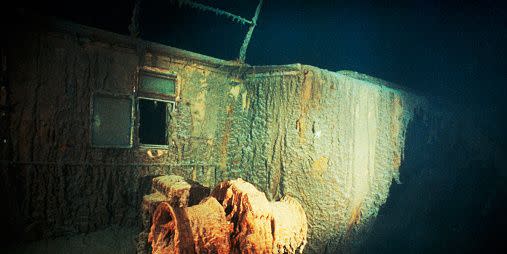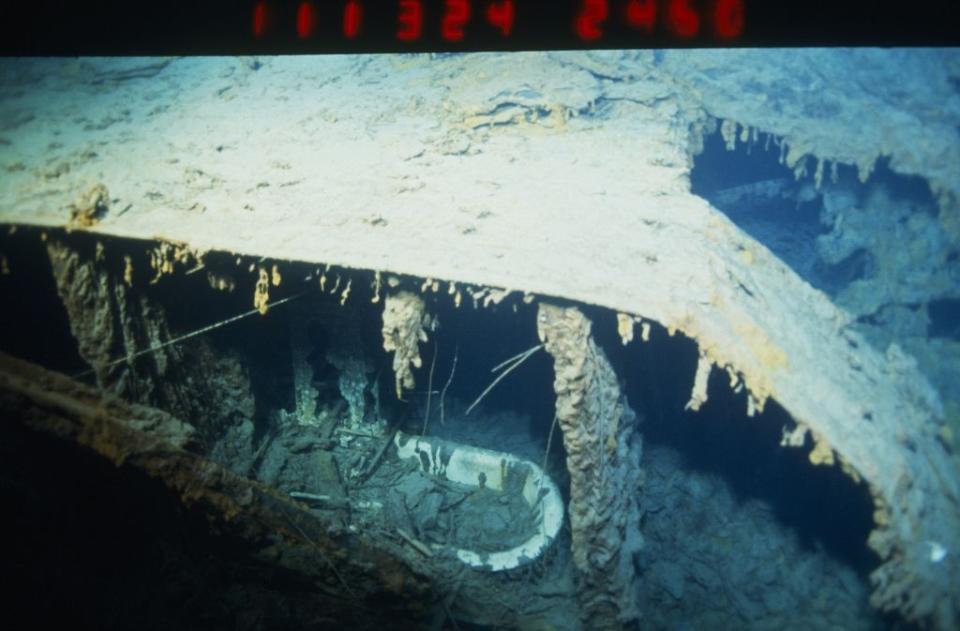The Titanic Keeps Deteriorating and Will Soon Be Gone Forever

The Titanic is rapidly corroding, with some structures—such as the captain's bathtub—already completely gone.
Researchers are working to determine how much time the wreckage has before the Titanic disappears forever.
It's no surprise that the RMS Titanic is deteriorating at the bottom of the Atlantic. After all, it's been hanging there since 1912 and has endured violent currents, salt corrosion, metal-eating bacteria, and James Cameron.
But divers with the Deep Submergence Vehicle (DSV) Limiting Factor recently found that some structures within the ship have completely rotted away as the ocean continues to claim pieces of the wreckage.
"Titanic is returning to nature"
Parts of the wreck are now deteriorating rapidly
[Tap to expand] https://t.co/O4TUkYIZP4 pic.twitter.com/jL2MC2cijD— BBC News (World) (@BBCWorld) August 21, 2019
According to the BBC, the most decayed parts of the historic ship are on the "starboard side of the officers' quarters."
Parks Stephenson, a Titanic historian, told the BBC that the captain's bathtub, "a favorite among Titanic enthusiasts," has disappeared. Stephenson also notes that the roof of the lounge has undergone advanced deterioration, causing it to slope. When the roof finally gives, it will block interior views of the ship.

What makes salt so corrosive?
Besides the fact that the Titanic has been submerged for more than a century, one of the main reasons it's rusting so quickly is because of the salinity of the seawater.
According to the University of California Santa Barbara, "water is the enabler of fast oxidation of iron so freshwater will also cause rust." And because salt water is an excellent conductor, "there are a number of electrolysis reactions that tremendously accelerate corrosion in salt water." If the Titanic had crashed in freshwater, the rate of decay would be much slower, since electrons move more slowly in pure water.
Robert Blyth, senior curator with the National Maritime Museum in London, believes it's important to study the ship while it still exists, especially since there are no more survivors left to tell its story.
"It's important to use the wreck whilst the wreck still has something to say," Blyth told the BBC.
Clare Fitzsimmons, a Titanic expedition scientist, reports that "microbes on the shipwreck ... are eating away the iron ... creating 'rusticle' structures" which have significantly weakened the metal. The rusticles are so sensitive that the slightest disturbance can cause them to vanish in a puff of dust.
Researchers are studying the levels of erosion of certain metals in seawater in an effort to discover how much time we have left to continue visiting the wreckage site before the sea swallows it whole.
You Might Also Like

